
Curved Fieldstone Wall: Part 9, The Salt Problem
Welcome back to our Curved Fieldstone Wall Series, where we attempt to rebuild the fieldstone walls in our front yard using historical masonry techniques. When we last left off, I had shared the progress we had made on building the second section of the wall. You can catch up on that here.
Today, I’ll share more progress (yay!) and discuss the one thing out of our control with this project – salt.
Personally, I’m a big fan of salt. We need it to stay alive. It makes food taste delicious.
What’s not to love?
Guess what isn’t a fan of salt?
Lime mortar.
What are we using to build our curved fieldstone wall?
Lime mortar.
But salt really, really likes lime mortar in an unhealthy way. It’s one of those toxic relationships where it will destroy the very thing it loves.
There is no Morton Salt fairy flying over the land with a salt shaker sprinkling salt everywhere she goes, so I’m safe in that regard.
Or am I?
In our community, a rumbling municipal truck sprays a salt brine on our road right before a forecasted snowstorm. We always know to take the weather forecast extra seriously when they fire up the salt truck.
The salt brine wouldn’t be a particular problem for us, except that, like many old homes, it was built close to the road. Or, rather, the road was built close to the home. Our curved fieldstone wall, a portion of it at least, is built even closer to the road.
I’m talking, reach out and touch it close. Please don’t hit it with the snowplow type of close. Definitely in the right-of-way kind of close.
The salt brine in and of itself isn’t the problem. That’s better than rock salt being scattered everywhere.
What we don’t know is how much salt will be absorbed by the snow and then pushed onto our property by the snowplow. When that snow melts, how much salt will leach out and find its way to our fieldstone wall? Will it be enough to cause damage?
We are going to find out.
The damage we’d expect to find if this became a problem would be some crumbling or breakdown of the mortar.
There are old homes built out of stone or brick that constantly deal with this problem, so if it becomes a problem for us, we aren’t unique. We also anticipate that if salt becomes a problem, it will be confined to a small area.
Short of repairing the lime mortar regularly, there are a few tools in our toolbelt that we could deploy if need be. For instance, we could switch to a different type of mortar in the affected area. We could, perhaps, install a drain in front of the wall to direct runoff away from the wall. The third idea is to install a barrier, curb, or bumper of some sort at the base of the wall in the affected area.
Perspective is also important. This is a flattering before picture of the curved fieldstone wall we are rebuilding.
It is flattering in that, from this angle, it doesn’t quite show just how precarious and rundown the curved fieldstone wall had become.
In person, you could see it was a jumbled mess in the area closest to the road – the area we are worried about.
It’s not likely that the salt will make the wall look or function as poorly as it did before we started rebuilding it. Only the snowplow running into it could do that.
*crosses fingers I didn’t jinx it*
Why am I telling you this? Oversharing is caring.
But seriously, it’s because I detail our old house journey here. We learn. We make mistakes. We take calculated risks. We’re curious. And every once in a while, someone we’ve never met benefits from the fact that I share our experience – the good and the bad. Helping someone else – that makes it worth it.
We went into this with eyes wide open. Hopefully, road salt never becomes a problem, but I’ll let you know!
I think we’re almost halfway done with the wall now. How do you think it is looking?
Comments really do make my day. You can comment on this blog post, email me here, or reach out via direct message on Instagram or Facebook.
Happy DIYing.
P.S. If you’ve ever seen bricks on a brick wall turning white, it’s probably taken on salt. You can’t wash away the salt. The salt will just dissolve in the water and be reabsorbed by the wall. You have to vacuum it away. Over and over as it appears. Learn more about that here.
P.P.S. Our well and a cistern are also in the public right-of-way. No joke! Everything here existed before the state laid claim to the right-of-way.
Thank you for following along with our DIY adventures. I appreciate you! If you missed any of the posts in this series, you can catch up here:
Curved Fieldstone Wall: Part 1, The Plan
Curved Fieldstone Wall: Part 2, Demo Section 1
Curved Fieldstone Wall: Part 3: Progress Section 1
Curved Fieldstone Wall: Part 4: Reveal Section 1
Curved Fieldstone Wall: Part 5: Porch Wall
Curved Fieldstone Wall: Part 6, Demo Section 2


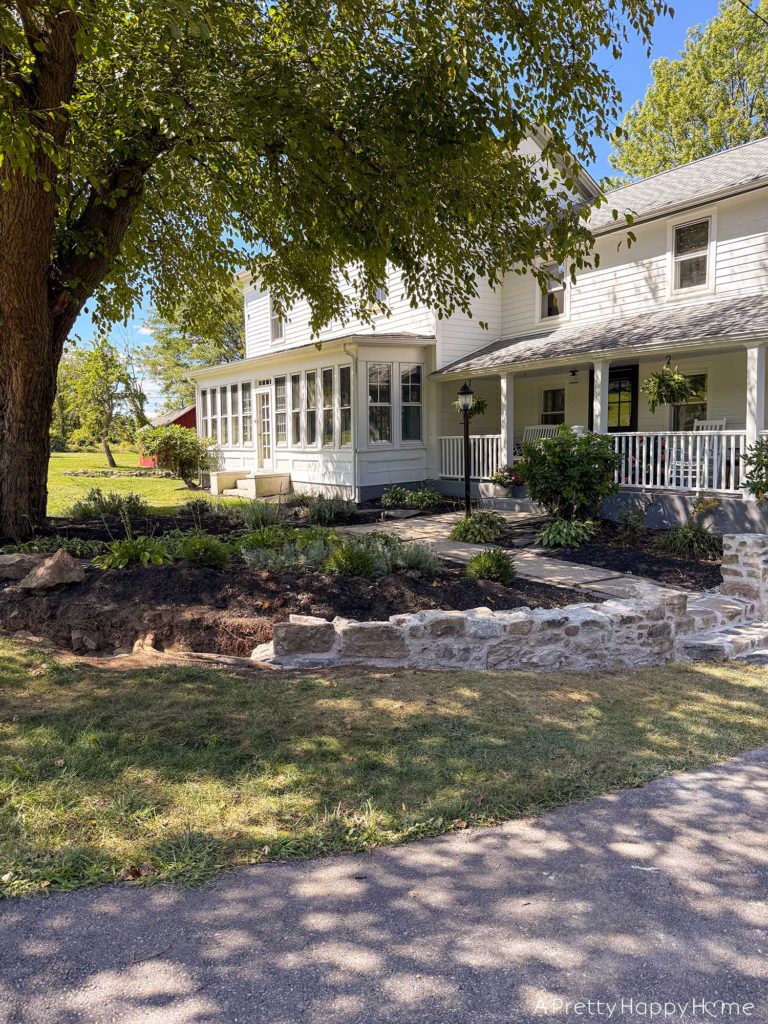
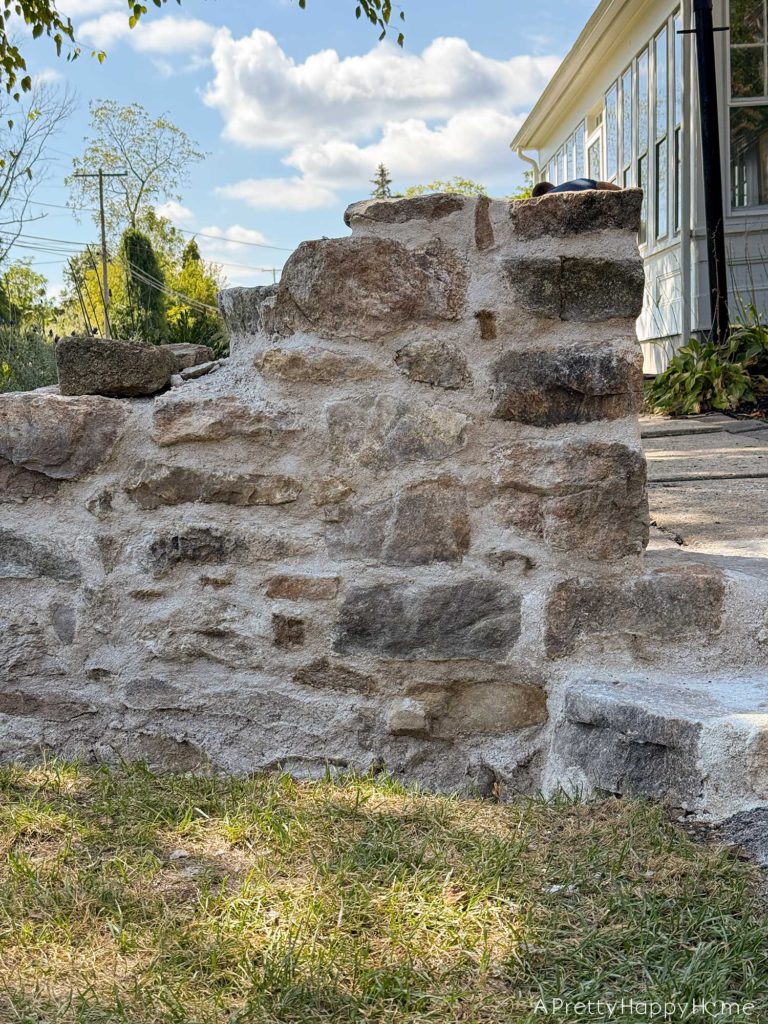
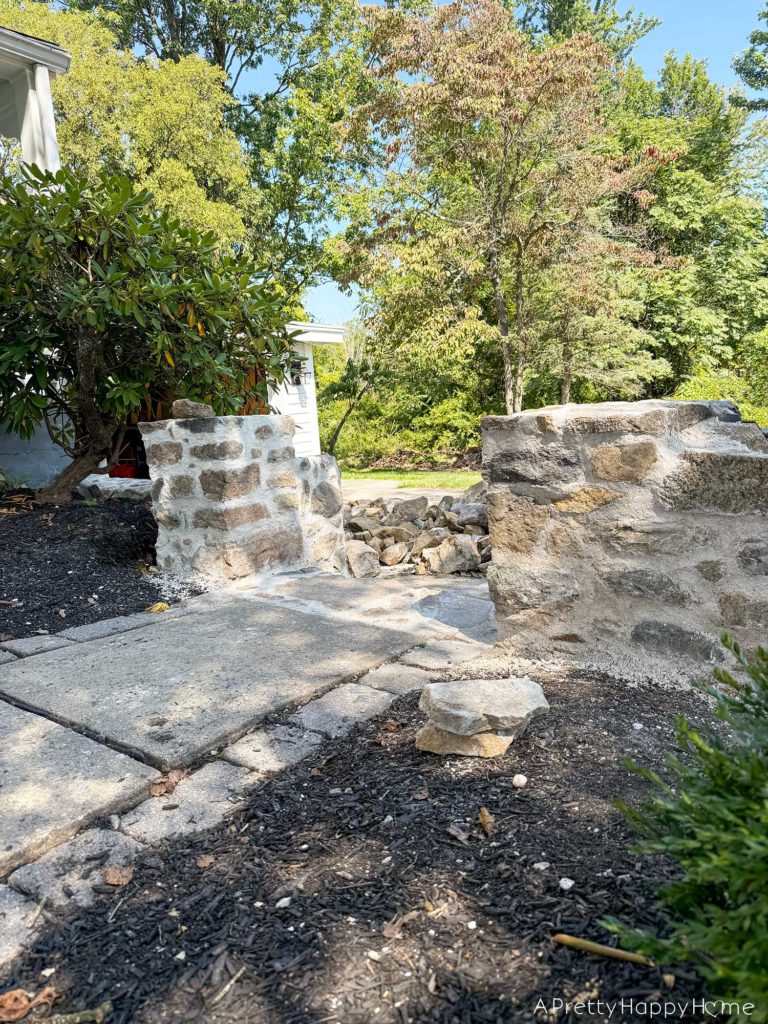
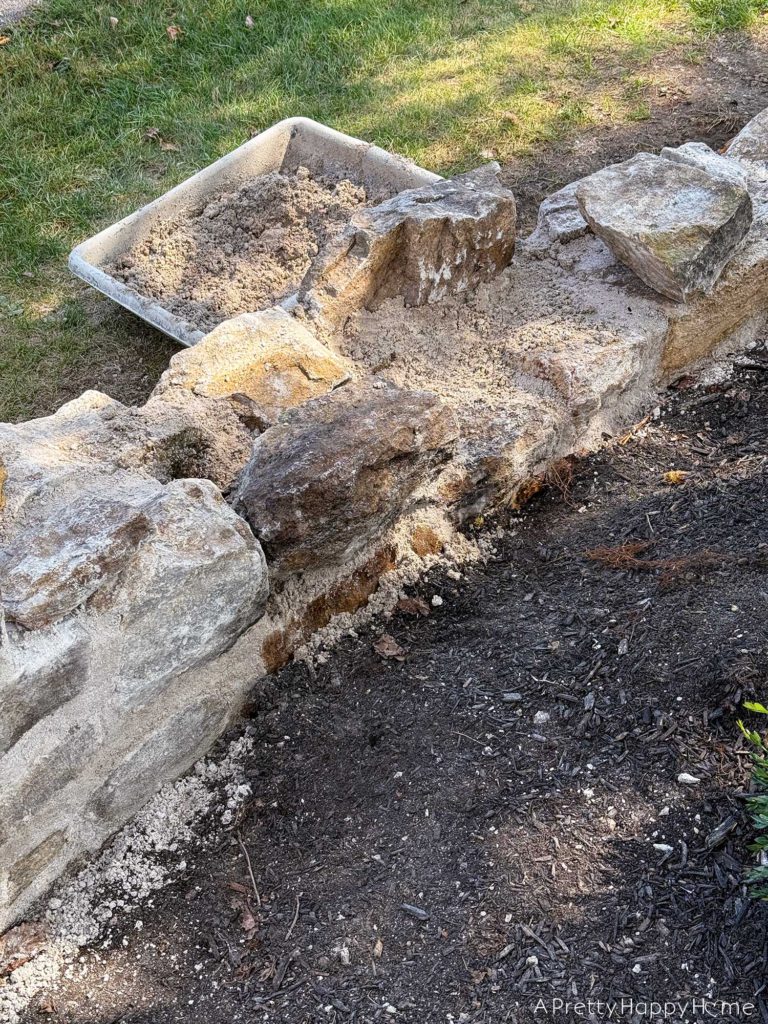
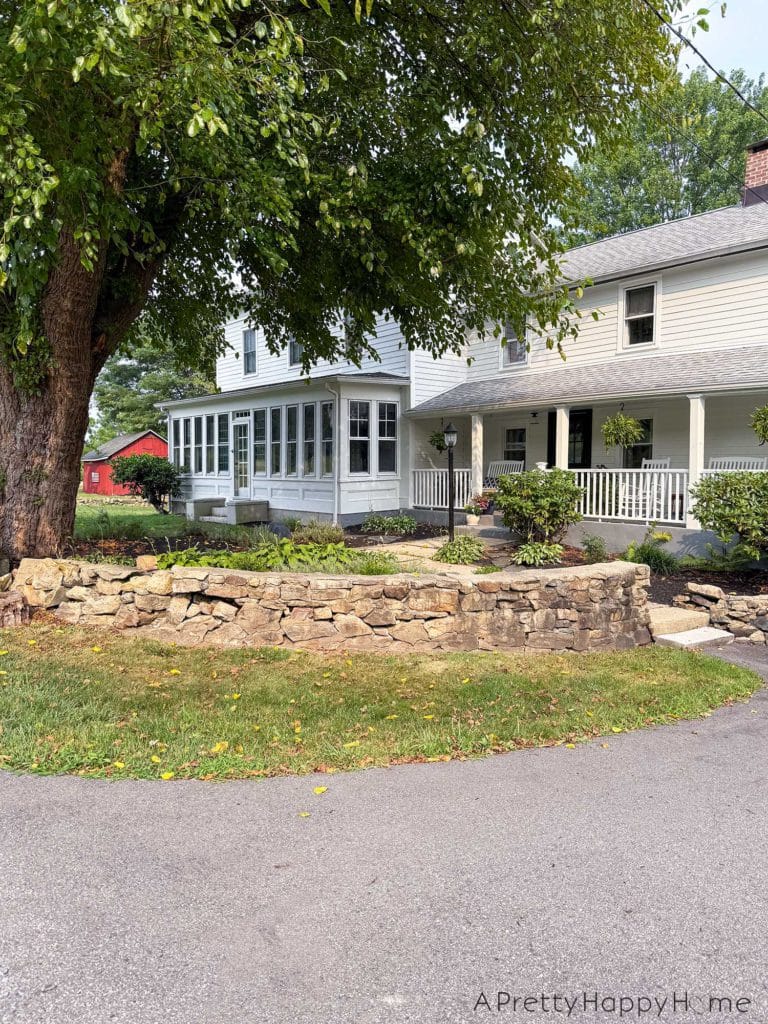
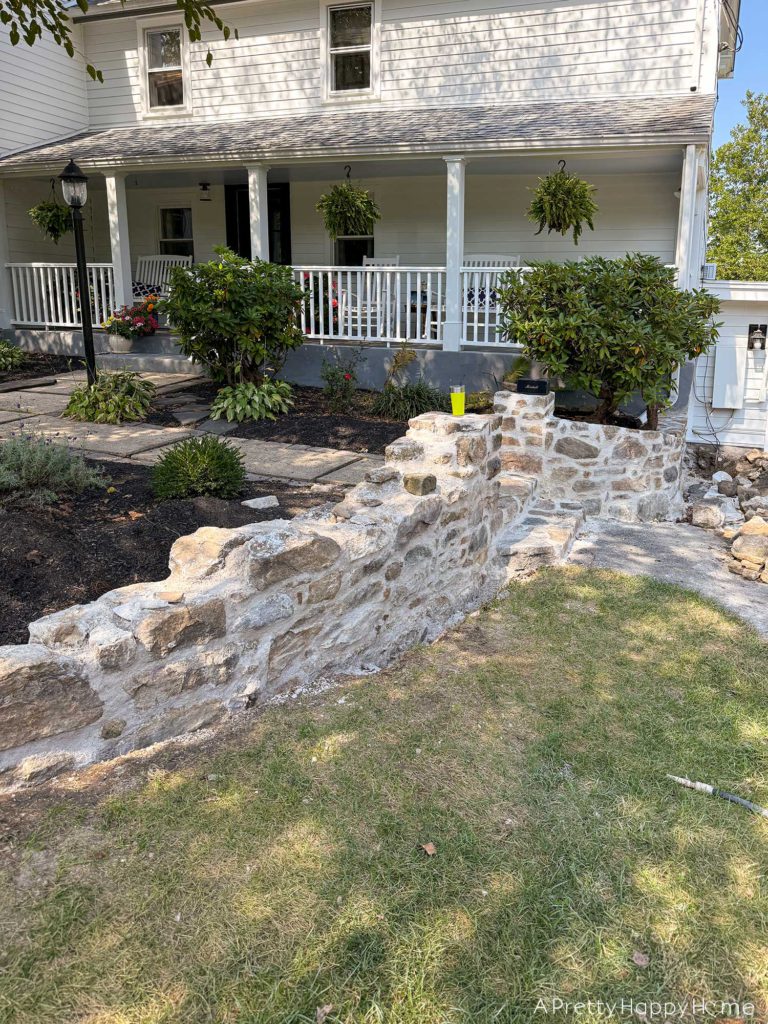




8 Comments
Laura L
Looking so good so far! Cannot wait to see it all done …. and then you can start on the other half of the wall ….. hahaha!
annisa
I was hoping to get this part done this month, but it is NOT looking good. All good things come to those who wait, right?!? Haha!
Aggie Ansell
As always learning something new, I love the chemistry in particular
annisa
Oh, yes! I agree.
Pamela
The pictures do make the wall look quaint, not wobbly. And the road looks farther away. We of course don’t get snow on Florida’s Treasure Coast and don’t deal with salting the roads but we do get salt spray from the ocean which causes corrosion to cars, mucks up the windows and is deadly to many plants. And we do have significant lime in our well water which spots up the landscaping and hard scape. I really enjoy hearing about all the things of your old farmhouse up north which have the the same elements but so differently. Like your roadway coming in after the house existed and you encroaching in the right a way. P.S. Your yard still looks quite lovely. We can’t grow hostas.
annisa
It’s interesting that you point out that we have similar items that manifest in different ways to affect our homes and lives – like the salt! It’s probably a good thing to keep in mind – these sort of connections.
Laura W
I have also learned that salt is not great for concrete in garages. There is a section of the foundation wall in our garage that has been crumbling and breaking apart. Had a contractor out and he said it’s due to road salt from our cars’ tires in the winter being asorbed. He didn’t have concerns for structural integrety (thankfully!) but it does not look great and will need a patch!
annisa
Ugh! I did not know that could happen. What a pain!